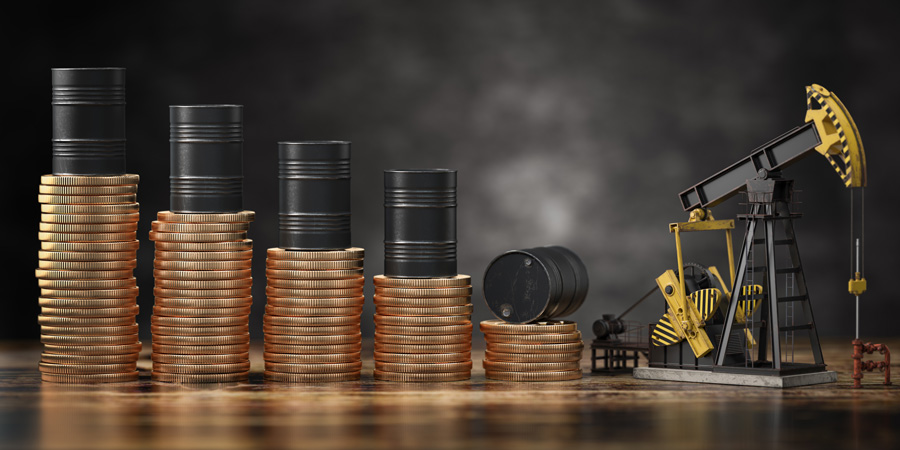Worldwide oil and gas exploration results took a major hit from reduced investment and the ongoing COVID pandemic last year.
Cautious industry spending and overall selectivity over prospects likely reduced discoveries to their lowest annual level in 75 years, based on preliminary added volumes, according to energy research and business intelligence company Rystad Energy in Oslo.
Here’s the recommendation from one industry analyst for 2022’s global exploration and supply outlook:
Stay chill for now.
“When it comes to global resource additions, the discovered volumes in 2021 were exceptionally low but it is too early to hit the panic button just yet,” said Palzor Shenga, vice president of upstream research for Rystad.
Reasons to be Hopeful
“There are a lot of exciting, drill-ready prospects awaiting to be spud in addition to the exploration potential within the new acreage awards in potential and proven basins,” Shenga noted.
In its most recent Short-Term Energy Outlook, released in mid-January, the U.S. Energy Information Administration projected that global liquid fuels consumption will grow by 3.6 million barrels per day in 2022 and 1.8 million bpd in 2023 – another reason for optimism.
“Furthermore, we still believe that exploration remains crucial to meet global liquids demand, which in our mean case is expected to peak at 104 million barrels per day in 2025,” Shenga said.
And the industry’s recent trend of underinvestment in upstream appears to be easing. Rystad expects an increase in global upstream investments from around $425 billion in 2021 to around $470 billion this year, said Espen Erlingsen, partner and head of upstream research.
“High commodity prices, which have improved the profitability in the industry, are a key reason for this comeback in investments. Investments in shale/tight oil in North America and deepwater – driven by Brazil, Guyana and West Africa – are expected to drive the growth this year,” Erlingsen noted.
If investment does reach that level it would represent a significant year-to-year increase, although still well below 2019’s global upstream capital spending total of $497 billion identified by the International Energy Agency.
Reasons for Decreased Investment
Expenditures on worldwide exploration would remain constrained, however, because exploration has received a shrinking share of upstream investment over the past decade. Exploration outlays dropped from about 21 percent of upstream spending in 2010 to around 9 percent in 2020, the IEA reported last year.
Shenga identified multiple potential reasons for the large decrease in conventional discovered volumes in 2021.
“Firstly, the drop is a clear indication that oil and gas companies were very much in recovery mode last year, and intent on preserving profits while adopting new strategies to remain competitive and investable. Thus, (they) remained cautious in terms of spending, leading to fewer wells drilled than the year before,” he said.
“Secondly, the wells that were drilled and completed resulted in a lower success rate, with the replacement ratios for liquids and gas down to 13 percent and 10 percent, respectively, compared to 27 percent and 37 percent the year before,” Shenga added.
Coming after a substantial economic and demand decline related to the global pandemic, plus increased investor demand for profitable operations and even a momentary oil-price plummet into negative numbers, it’s probably not surprising the industry recorded a year of wariness and pullback in exploration.
Last year, “some of the high-ranked prospects failed to deliver, both in terms of the amount of hydrocarbon content and commerciality, with some discoveries still under evaluation,” Shenga observed.
“Finally, a bunch of wells also didn’t complete exploration drilling, the results of which will be expected during the first quarter of 2022,” he added.
Recovery from an Historic Low
Complete exploration results for last year aren’t in yet. While one or two positive late announcements could improve the picture for discoveries, it’s almost certain 2021 will show the industry’s lowest discovered volumes in several decades.
Rystad predicts the world’s upstream players will continue to be cautious with exploration spending in the year ahead and will “handpick their wildcat drilling prospects carefully,” Shenga said.
“Explorers are likely to focus on their core areas and choose prospects with higher probability of success to boost their oil and gas volumes,” he noted.
Early 2022 brought the oil and gas industry a boon in higher product prices and also more uncertainty from yet another coronavirus variant. Omicron led to a revision, then a re-revision, of expected demand and activity levels.
As a result, some optimistic scenarios for exploration turned into wait-and-see scenarios. Predictions still called for increased drilling this year with offshore leading the way, including sizable potential off eastern South America and southern Africa. Deepwater could account for around half of new discoveries, with overall added reserves evenly split between crude and natural gas.
Explorers continue to control costs and increase efficiency through emerging and improved technologies, like digital twins, the use of real-time, digital counterparts or “twins” of physical processes, settings and objects.
More than anything, sustained high prices have brightened the 2022 exploration outlook even as oil and gas companies emphasize financial discipline. Shenga said the industry has already been more cautious than ever before.
“The decline in exploration spending from over $100 billion in the start of the decade to less than $40 billion in 2021 is a clear indication that not all prospects mapped/identified are being drilled, unless proved or thought to be economically and commercially viable with a higher chance of success,” he noted.
“Having said that, the subsurface uncertainties can never be accurately predicted. However, improvement of technologies such as digital twins, and inculcation of ideas such as widespread data- and knowledge-sharing across the explorers could help minimize the cost, therefore making exploration more and more cost efficient,” he said.
